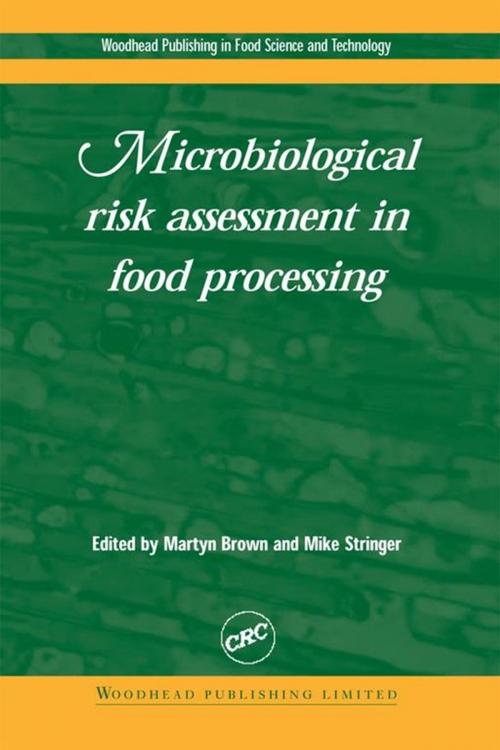Microbiological Risk Assessment in Food Processing
Nonfiction, Science & Nature, Technology, Food Industry & Science| Author: | ISBN: | 9781855736689 | |
| Publisher: | Elsevier Science | Publication: | September 26, 2002 |
| Imprint: | Woodhead Publishing | Language: | English |
| Author: | |
| ISBN: | 9781855736689 |
| Publisher: | Elsevier Science |
| Publication: | September 26, 2002 |
| Imprint: | Woodhead Publishing |
| Language: | English |
Microbiological risk assessment (MRA) is one of the most important recent developments in food safety management. Adopted by Codex Alimentarius and many other international bodies, it provides a structured way of identifying and assessing microbiological risks in food. Edited by two leading authorities, and with contributions by international experts in the field, Microbiological risk assessment provides a detailed coverage of the key steps in MRA and how it can be used to improve food safety.
The book begins by placing MRA within the broader context of the evolution of international food safety standards.
Part one introduces the key steps in MRA methodology. A series of chapters discusses each step, starting with hazard identification and characterisation before going on to consider exposure assessment and risk characterisation. Given its importance, risk communication is also covered. Part two then considers how MRA can be implemented in practice. There are chapters on implementing the results of a microbiological risk assessment and on the qualitative and quantitative tools available in carrying out a MRA. It also discusses the relationship of MRA to the use of microbiological criteria and another key tool in food safety management, Hazard Analysis and Critical Control Point (HACCP) systems.
With its authoritative coverage of both principles and key issues in implementation, Microbiological risk assessment in food processing is a standard work on one of the most important aspects of food safety management.
- Provides a detailed coverage of the key steps in microbiological risk assessment (MRA) and how it can be used to improve food safety
- Places MRA within the broader context of the evolution of international food safety standards
- Introduces the key steps in MRA methodology, considers exposure assessment and risk characterisation, and covers risk communication
Microbiological risk assessment (MRA) is one of the most important recent developments in food safety management. Adopted by Codex Alimentarius and many other international bodies, it provides a structured way of identifying and assessing microbiological risks in food. Edited by two leading authorities, and with contributions by international experts in the field, Microbiological risk assessment provides a detailed coverage of the key steps in MRA and how it can be used to improve food safety.
The book begins by placing MRA within the broader context of the evolution of international food safety standards.
Part one introduces the key steps in MRA methodology. A series of chapters discusses each step, starting with hazard identification and characterisation before going on to consider exposure assessment and risk characterisation. Given its importance, risk communication is also covered. Part two then considers how MRA can be implemented in practice. There are chapters on implementing the results of a microbiological risk assessment and on the qualitative and quantitative tools available in carrying out a MRA. It also discusses the relationship of MRA to the use of microbiological criteria and another key tool in food safety management, Hazard Analysis and Critical Control Point (HACCP) systems.
With its authoritative coverage of both principles and key issues in implementation, Microbiological risk assessment in food processing is a standard work on one of the most important aspects of food safety management.
- Provides a detailed coverage of the key steps in microbiological risk assessment (MRA) and how it can be used to improve food safety
- Places MRA within the broader context of the evolution of international food safety standards
- Introduces the key steps in MRA methodology, considers exposure assessment and risk characterisation, and covers risk communication















